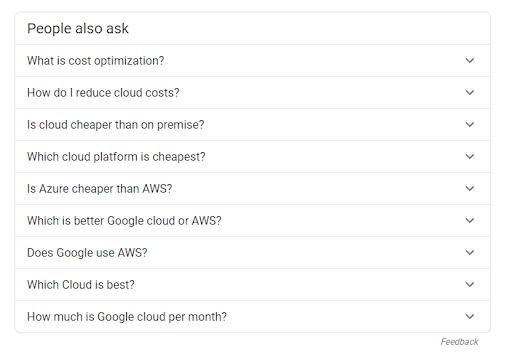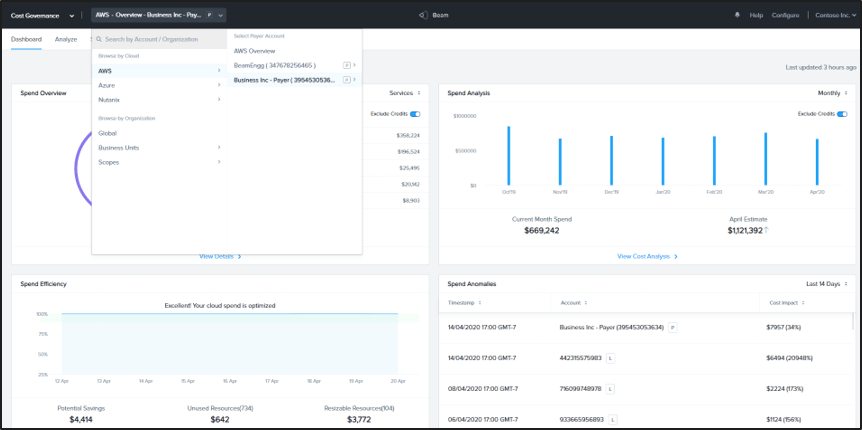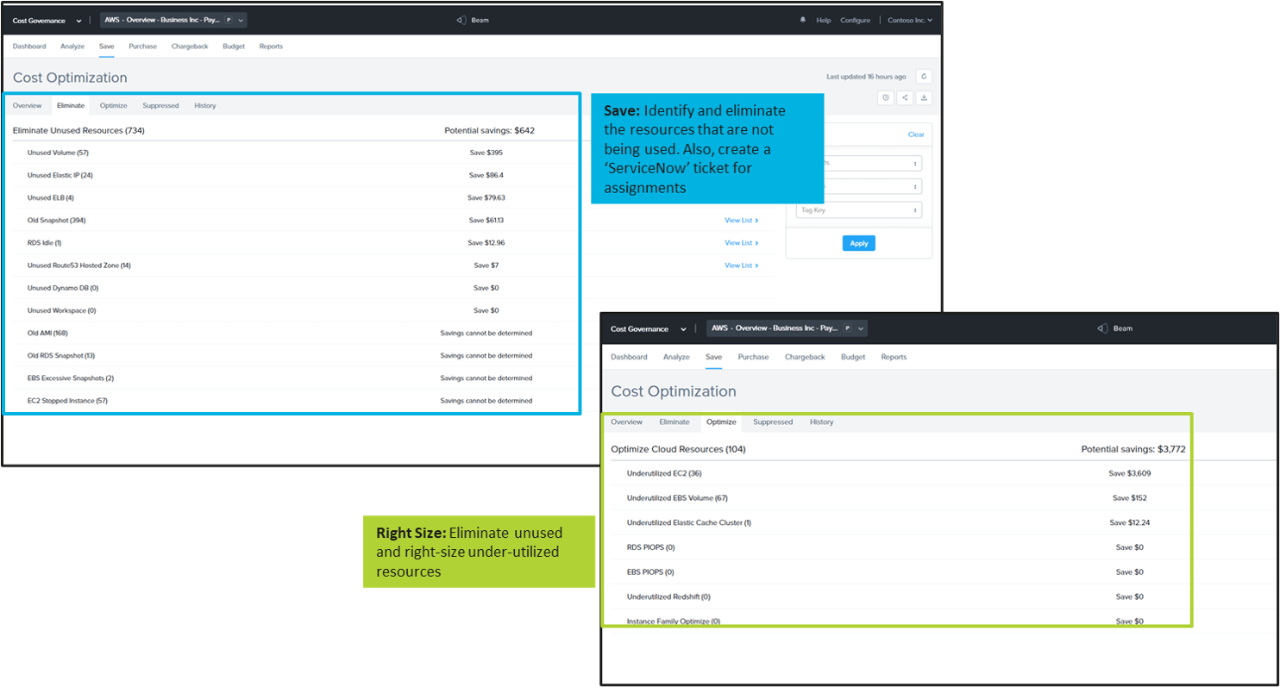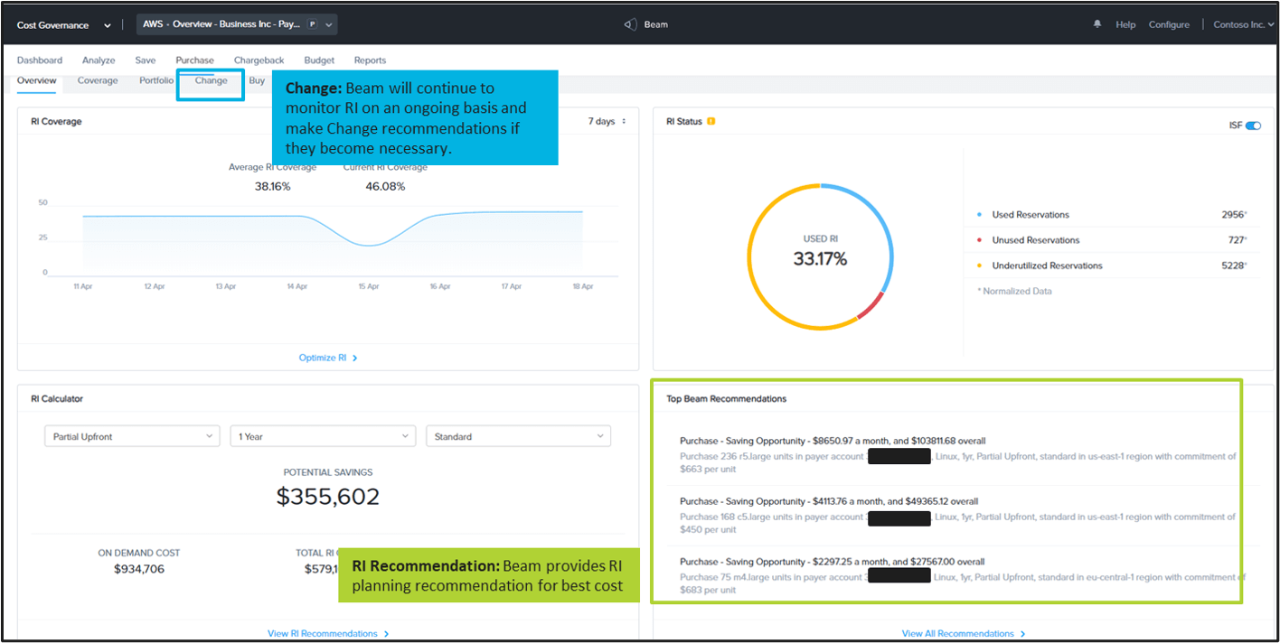Taking Control of Your Costs in Public Cloud, Hybrid Cloud, or Multi-Cloud
I recently presented a webinar on the state of cloud deployments in the manufacturing industry and many of the questions were centered around the same topic: How can cloud deployments be managed to achieve maximum cost efficiency?
This made me think – there must be a lot of IT practitioners in manufacturing who need help with cloud/hybrid cloud/multi-cloud cost governance. Hence, this blog.
I will answer most of your cloud cost optimization questions in this blog.
Google’s “People also ask” for search on multi-cloud management

Hybrid/Multi-Cloud in Manufacturing
It’s inevitable to have multi-cloud deployments in manufacturing. Why the need for cloud capabilities and why multi-cloud?
Why cloud?
The manufacturing business is globally spread - logistics and supply chains span multiple vendors and regions, and the product/engineering teams and customers span across the globe. Hence, accurate infrastructure planning is extremely difficult. Cloud solves this challenge by giving you the ability to burst or scale up and down to meet your specific demands.
Why multi-cloud?
We all know by now that every cloud provider has different capabilities, and pros and cons. The benefit of multi-cloud is that it enables you to get the best of them all. The icing on the cake is that multi-cloud infrastructure empowers organizations to be free of vendor lock-in.
In addition, the smart manufacturing initiatives that are being implemented in the industry need hybrid and multi-cloud capabilities.
But, how do you tame the hybrid and multi-cloud beast?
First, understand your spending
In order to govern something, first you need to be able to look at the full picture.
Xi Beam by Nutanix delivers unified cost governance dashboards that provide visibility into both public and private cloud spend from the same tool to make it easier to manage your cloud costs.

Now you have a dashboard to view your spending across your multi-cloud deployment, cloud provider, and by account.
Next, optimize your resource use
When I was working as an engineer at a Fortune 500 technology company, we had thousands of engineers and hundreds of projects. At any given point in time, many of these engineers were leaving one project to move to a new one or even leaving the company, and the cloud resources assigned to them were going unused. And, as an engineer, I always wanted the biggest and baddest resources for my code.
These practices work counter to infrastructure cost optimization. Considering that infrastructure teams are usually much smaller than the total number of engineers, it becomes very difficult to keep up with resource management.
This is where Beam comes in. It not only provides a single pane of glass for all your multi-cloud spend but also delivers, on average, approximately 35% or more in public cloud cost savings through several different ways.

Beam identifies resources that you are paying for but not using optimally – these can be completely unused resources, or partially utilized resources. Our solution does this by looking at various metrics such as CPU, memory utilization, Network I/O, etc. You can then easily delete resources that are identified directly from Beam console as unneeded and down-size resources identified as under-utilized.
Using statistical genius for reserved instance recommendations
One of the biggest sources of cost savings is switching from on-demand to reserved instances (RI). But, how do you decide how many RIs to purchase and of what type? Beam does the necessary analyses for you by looking at the instances you are running continuously over a 14- or 30-day lookback period and makes recommendations for RI purchases based on its findings. It also shows you a cost analysis of RI vs on-demand instances.

With Beam, you are empowered to manage your multi-cloud deployments.
Next steps:
Start your free trial of Beam here.
Try out other Nutanix HCI Solution on a live Nutanix cluster, with self-guided steps.

© 2020 Nutanix, Inc. All rights reserved. Nutanix, the Nutanix logo and all Nutanix product and service names mentioned herein are registered trademarks or trademarks of Nutanix, Inc. in the United States and other countries. All other brand names mentioned herein are for identification purposes only and may be the trademarks of their respective holder(s). This post may contain links to external websites that are not part of Nutanix.com. Nutanix does not control these sites and disclaims all responsibility for the content or accuracy of any external site. Our decision to link to an external site should not be considered an endorsement of any content on such a site. Certain information contained in this post may relate to or be based on studies, publications, surveys and other data obtained from third-party sources and our own internal estimates and research. While we believe these third-party studies, publications, surveys and other data are reliable as of the date of this post, they have not independently verified, and we make no representation as to the adequacy, fairness, accuracy, or completeness of any information obtained from third-party sources.
This post may contain express and implied forward-looking statements, which are not historical facts and are instead based on our current expectations, estimates and beliefs. The accuracy of such statements involves risks and uncertainties and depends upon future events, including those that may be beyond our control, and actual results may differ materially and adversely from those anticipated or implied by such statements. Any forward-looking statements included herein speak only as of the date hereof and, except as required by law, we assume no obligation to update or otherwise revise any of such forward-looking statements to reflect subsequent events or circumstances.